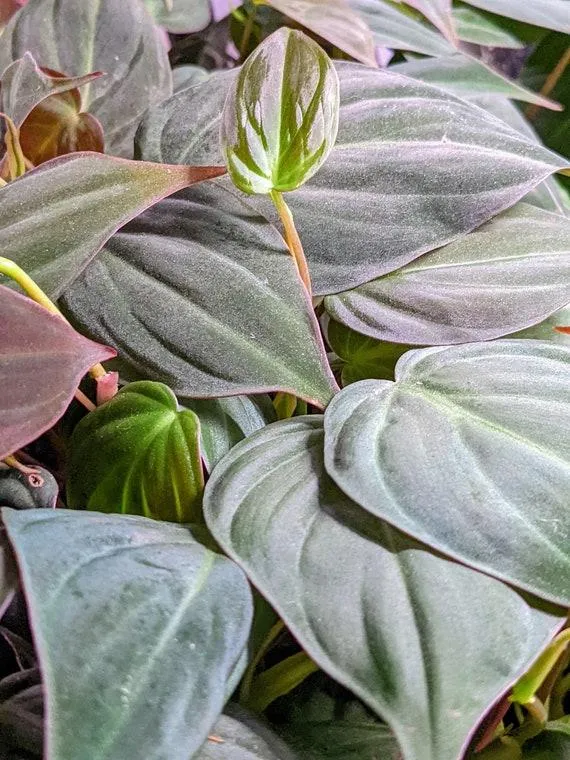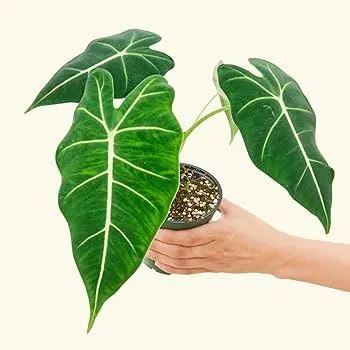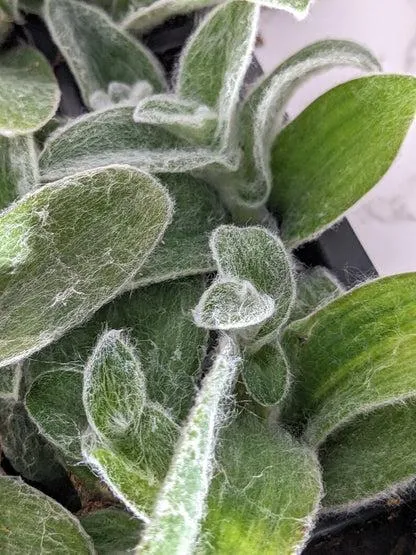The Incredibly Soft Plants That Feel Just Like Velvet
Have you ever longed to touch something as silky smooth as velvet? While you may not be able to pet an actual velvet fabric all day, there are several plants out there with leaves that provide an incredibly similar tactile experience. In this article, I’ll explore some of the most velvety vegetation and share details about their care so you can grow your own miniature “velvet jungle” at home.
Peperomia
- Peperomia is a genus of over 1,000 different species of flowering plants known for their unusual leaf textures. One of the most touched varieties is Peperomia caperata, commonly called the radiator plant. Its oval, dark green leaves have a velvety coating that makes them a delight to run your fingers across.
- From my experience caring for peperomia, they grow well in medium to bright indirect light and like moist but well-draining soil. They can thrive in low-maintenance indoor conditions and propagate easily from cuttings. Just be sure not to overwater, as wet soil can cause root rot in these plants.
- When bringing a new peperomia home, I recommend admiring its soft leaves right away. Afterwards, find it a spot with diffused sunlight where you’ll be tempted to give its foliage an occasional gentle caress as you walk by. The sensation is utterly soothing.
Coleus
- With their rainbow palette of foliage colors and textures, coleus are a favorite among plant enthusiasts and novices alike. Many varieties have leaves that feel as plush as velour. A standout is ‘Black Knight’ coleus whose midnight purple leaves have a fuzz so dense and cushiony soft it’s impossible not to touch.
- In my experience growing coleus, they do best in partial shade and moist, well-draining soil. They can handle low to moderate light indoors and thrive with consistent watering. Be cautious not to over-fertilize, which can damage their leaves. Pruning encourages bushiness and prolongs flowering.
- A word of warning though – once you start petting coleus leaves, it may be hard to stop! Their fuzzy coating stimulates finger neurons in a strangely satisfying way. Just try not to get too distracted from everyday tasks while indulging in their silky texture.
Velvet Plant
- As the name suggests, Gynura aurantiaca, also known as purple velvet plant, truly lives up to its name. Like ultra-fine baby hair, its oval leaves are dotted with reddish-colored hairs that make touching them an irresistible tactile experience.
- In my experience growing velvet plants, they thrive in medium to bright filtered light and will let you know when thirsty by drooping leaves. I find misting the foliage helps retain its plush texture. They’re not fussy about soil as long their roots stay evenly moist.
- For maximum enjoyment, place your velvet plant where it will get brushed against frequently, like on an office desk or coffee table. You can also grow several together for an eye-catching “velvet hedge” to run your hands along as you please.
Fittonia
- No discussion of velvet-leaved plants would be complete without mentioning Fittonia, or nerve plant. Its petite emerald or pink leaves have an ultra-soft coating of curled hairs that creates an irresistible magnetic pull for fingers. Touch one leaf and you’ll want to caress them all!
- From experience, fittonias thrive in high humidity and prefer to stay consistently moist. They’re not picky eaters but appreciate occasionally diluted fertilizer. Peace lilies make great housemates as they too crave humid conditions. Place fittonias on pebble trays filled with water to boost ambient moisture.
- If given optimal care, fittonias will reward you with a veritable carpet of fuzzy foliage begging to be caressed. Use them to line a sheltered indoor windowsill or group several in a pebble-filled saucer for an extra pettable plant feature.
By now, your fingers may be itching with plant envy! While these velvet-leaved varieties originate from different parts of the world, they all share an incredibly plush texture just begging to be touched. With a few easy-care species in your home or office, you’ll always have something silky-smooth close at hand to soothe your senses. Who knows, over time you may develop a sixth finger-plant connection!

On concluding this article, I hope sharing these plant profiles sparked your curiosity about growing living “velvet.” With some TLC, one or more of these soft-leaved beauties could become your new source of everyday tactile joy and distraction. Shoot me a message if you need any other plant care tips as you start assembling your own miniature velvet jungle!
Top 5 Plants That Feel Like Velvet
| Plant | Care Needs | Bloom Time | Texture |
|---|---|---|---|
| Velvet Plant | Low light, moderate water | Spring to fall | Soft, fuzzy leaves |
| Coleus | Medium light, occasional water | Blooms insignificant | Soft, fuzzy leaves |
| Peperomia | Low light, allow soil to dry | No blooms | Smooth, soft fuzzy patches on leaves |
| Polka Dot Plant | Medium light, moderate water | Spring to fall | Distinct fuzzy white dots on leaves |
| Zebra Plant | Bright light, moderate water | Insignificant blooms | Stripes of soft velvety patches on leaves |
FAQ
-
What plant feels like velvet?
The coral plant, also known as the velvet leaf plant, has leaves that truly feel like velvet. Its leaves are fine and fuzzy, almost like they are covered in tiny hairs. When you run your hand over a leaf, it feels incredibly soft and plush, kind of like velvet fabric.

-
Where does the coral plant grow?
The coral plant grows naturally in tropical and subtropical parts of Africa, Asia, and Australia. These days though, it is grown as a houseplant all over the world. I used to have one in my home that my grandmother gave me. She had a green thumb and could grow anything! The coral plant thrived in her care.
-
What does the coral plant look like?
As the name suggests, the coral plant has leaves that resemble coral in color and texture. Its leaves are green to reddish purple in color and arranged oppositely on the stems. Individual leaves are oval to elliptic in shape and only reach about 2-4 inches in length. At the same time, the dense velvety covering gives the leaves a striking appearance, especially when backlit by sunlight.

-
How do you care for a coral plant?
Coral plants are pretty low maintenance as houseplants go. They like warm conditions and don’t want to be in direct sun. You’ll basically want to water them when the top inch or so of soil is dry. However, be sure not to overwater them either or the leaves may start to yellow and drop. They also enjoy high humidity. So you could consider grouping it with other plants or using a pebble tray to keep humidity levels up.
-
Does the coral plant flower?
Believe it or not, but in addition to its unique velvety leaves, the coral plant can also produce some pretty amazing white or pink flowers. These tubular five-petaled blooms appear in the spring or summer months on stalks rising above the foliage. They’re what first attracted my attention to this plant when I saw it flowering in a garden center years ago. It makes me wonder what other delightful surprises nature has in store!

-
Why is this plant called a coral plant?
The coral plant gets its name from the color and texture of its leaves, which resemble coral in the ocean. When you look closely, the leaves have a reddish or pinkish tint like coral and feel bumpy or rough like coral due to the tiny hairs. I guess someone must have spotted this similarity long ago when scientists were first describing plant species from around the world. The name has stuck ever since!
-
In summary, what makes the coral plant special?
To wrap it up, the coral plant stands out from others for a couple reasons. First off, its leaves truly feel as soft as velvet, making it a real pleasure to touch. At the same time, it can produce these far-out pink and white blooms. Plus, the overall coral-like appearance is really unique. Is there any other plant that rocks a velvety leaf texture AND coral-inspired good looks? I’m not sure, but the coral plant is definitely one-of-a-kind in my book.
